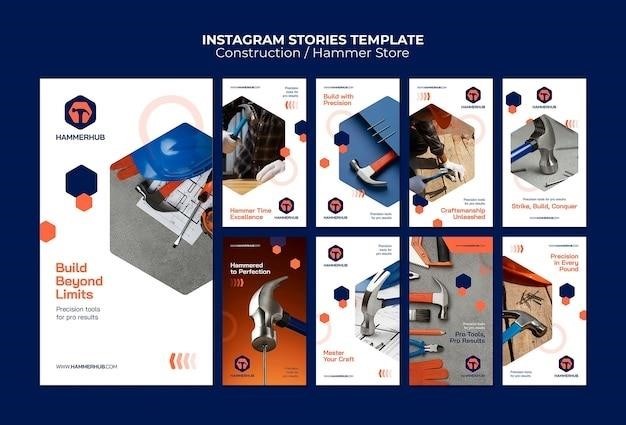Modern Welding 12th Edition⁚ A Comprehensive Guide
Modern Welding, 12th Edition, is a comprehensive text that has long been the standard for teaching theory, fundamentals, equipment, and techniques of welding technology․ It is a two-year curriculum guide for complete AWS SENSE Level 1 and Level 2 certification, covering shielded metal arc welding, gas metal arc welding, flux cored arc welding, gas tungsten arc welding, oxyfuel gas welding and cutting, various thermal cutting processes, testing and inspection, welding symbol interpretation, and print reading․
Introduction
Modern Welding 12th Edition is a comprehensive guide to the world of welding, offering a deep dive into both the theoretical and practical aspects of this critical field․ This edition, like its predecessors, sets the standard for welding education by providing a robust foundation in welding technology, encompassing everything from fundamental principles to advanced techniques․ Its extensive coverage extends across various welding processes, equipping students with the knowledge and skills necessary to excel in this demanding industry․

The 12th edition continues to build upon the success of its predecessors, incorporating the latest advancements in welding technology, equipment, and safety regulations․ It is a valuable resource for students seeking AWS SENSE Level 1 and Level 2 certification, providing a thorough understanding of critical concepts like shielded metal arc welding, gas metal arc welding, flux cored arc welding, gas tungsten arc welding, oxyfuel gas welding and cutting, and various thermal cutting processes․ Furthermore, the book delves into essential topics like testing and inspection, welding symbol interpretation, and print reading, preparing students for real-world welding applications․
Key Features of the 12th Edition
The 12th edition of Modern Welding presents a wealth of features designed to enhance the learning experience and provide students with a comprehensive understanding of welding technology․ One of the key features is its updated content, reflecting the latest advancements in welding processes, equipment, and safety regulations․ The book also includes a wealth of visual aids, such as diagrams, illustrations, and photographs, to reinforce key concepts and make learning more engaging․
Another notable feature of the 12th edition is its inclusion of interactive activities․ These activities are designed to help students master the technical vocabulary, concepts, and procedures presented in the textbook, making learning more dynamic and interactive․ The book also includes a comprehensive glossary of welding terms, providing students with a readily accessible reference for important definitions․ Furthermore, the 12th edition offers a dedicated section on welding symbols, providing students with a clear understanding of this crucial element in welding communication․
Welding Processes Covered
Modern Welding, 12th Edition, provides a comprehensive overview of a wide range of welding processes, equipping students with the knowledge and skills necessary to excel in various welding applications․ The book delves into the fundamentals of shielded metal arc welding (SMAW), a widely used process known for its versatility and affordability․ It also explores gas metal arc welding (GMAW), a process that uses a continuous wire electrode and a shielding gas to create a stable arc, enhancing efficiency and productivity․
The book further examines flux-cored arc welding (FCAW), which utilizes a tubular electrode filled with flux to create a protective atmosphere, making it suitable for various applications․ Gas tungsten arc welding (GTAW), a process known for its precision and ability to produce high-quality welds, is also discussed in detail․ Beyond these common welding processes, the book covers oxyfuel gas welding and cutting, a versatile method used for both welding and cutting applications․ The text also explores various thermal cutting processes, providing students with a comprehensive understanding of different techniques used in metal fabrication․
Equipment and Techniques
Modern Welding, 12th Edition, provides a detailed exploration of the equipment and techniques essential for successful welding operations․ The book covers a wide range of welding equipment, including power sources, welding torches, electrode holders, and safety gear․ It offers in-depth explanations of the principles behind different welding power sources, such as AC/DC power supplies, constant current and constant voltage systems, and their applications in various welding processes․
The text delves into the intricacies of welding torches, discussing their components, operating principles, and proper handling techniques․ It also provides comprehensive guidance on electrode holders, explaining their types, functions, and safety precautions․ Furthermore, Modern Welding, 12th Edition, emphasizes the importance of safety in welding operations, covering essential safety equipment such as welding helmets, gloves, and protective clothing․ It provides detailed information on safety procedures, hazard identification, and emergency response plans․
Safety and Regulations
Modern Welding, 12th Edition, places a strong emphasis on safety and regulations in the welding industry․ The book provides comprehensive information on the potential hazards associated with welding, including electrical shock, burns, eye damage, and respiratory problems․ It outlines specific safety precautions and procedures to mitigate these risks, such as using proper personal protective equipment, maintaining a safe work environment, and following established safety protocols․
The 12th Edition also explores the regulatory framework governing welding practices; It covers important safety standards and codes, such as those established by the American Welding Society (AWS) and the Occupational Safety and Health Administration (OSHA)․ The text provides clear explanations of relevant regulations, including those related to workplace safety, equipment inspection, and worker training․ Modern Welding, 12th Edition, equips readers with the knowledge to comply with industry regulations and ensure a safe and responsible welding environment․
Welding Symbols and Joint Design
Modern Welding, 12th Edition, delves into the crucial area of welding symbols and joint design․ The text provides a comprehensive understanding of the standardized symbols used in welding blueprints and drawings․ It covers the various elements of a welding symbol, including the reference line, arrow, tail, and supplemental symbols․ Readers learn how to interpret these symbols to determine weld type, size, location, and other essential details․ The book thoroughly explains the different types of joints used in welding, including butt joints, fillet joints, lap joints, and corner joints․ It discusses the importance of proper joint design for achieving strong and durable welds, considering factors such as stress distribution, weld penetration, and fit-up․
Modern Welding, 12th Edition, emphasizes the importance of accurate interpretation of welding symbols and proper joint design for successful welding projects․ This knowledge is essential for welders, engineers, and anyone involved in the fabrication and construction industries․ By understanding these fundamental concepts, readers can ensure the quality and integrity of their welding work․
Inspection and Testing
Modern Welding, 12th Edition, dedicates a section to the critical aspects of inspection and testing in welding․ The text emphasizes the importance of ensuring the quality and integrity of welded joints through thorough inspection and testing methods․ It covers various non-destructive testing techniques, such as visual inspection, radiographic testing, ultrasonic testing, magnetic particle testing, and dye penetrant testing․ Readers gain a comprehensive understanding of the principles behind these techniques and their applications in detecting defects in welds․ The book also discusses destructive testing methods like tensile testing, bend testing, and hardness testing, providing insights into the evaluation of weld strength and material properties․
Modern Welding, 12th Edition, equips readers with the necessary knowledge to effectively inspect and test welds, ensuring that they meet the required standards for safety, performance, and longevity․ This section highlights the importance of quality control in welding and its role in preventing failures and ensuring the success of welding projects․
Qualification and Certification
Modern Welding, 12th Edition, provides a comprehensive guide to welding qualification and certification․ The text delves into the importance of standardized procedures for ensuring that welders possess the necessary skills and knowledge to perform their tasks safely and effectively․ It covers the different levels of welding qualification, from basic to advanced, and explains the requirements for obtaining certification in various welding processes․ The book also explores the role of certification bodies in evaluating and recognizing welding skills, ensuring that welders meet industry standards and are qualified to work on specific projects․
Modern Welding, 12th Edition, emphasizes the significance of welding certification in promoting safety, quality, and consistency in the welding industry․ It highlights how certification serves as a benchmark for evaluating welder competence and helps ensure that welded structures meet the required safety and performance standards․
Heat Treatments
Modern Welding, 12th Edition, dedicates a section to the crucial topic of heat treatments in welding․ This chapter delves into the various heat treatment processes commonly employed in welding applications, explaining their purposes and effects on the weldment’s properties․ The text covers essential heat treatment methods such as stress relief, annealing, normalizing, tempering, and hardening, outlining their specific applications and the desired outcomes they achieve․
Modern Welding, 12th Edition, emphasizes the importance of understanding the principles of heat treatment for welders, as it directly impacts the final strength, ductility, and overall quality of welded components․ The book provides practical insights into the factors influencing heat treatment effectiveness, including the type of metal, the welding process employed, and the desired mechanical properties․
Applications and Industries
Modern Welding, 12th Edition, provides a comprehensive overview of the diverse applications and industries where welding plays a vital role․ The book highlights the extensive range of welding applications, encompassing everything from construction and manufacturing to automotive and aerospace․ It explores the specific welding processes and techniques used in various industries, illustrating how welding contributes to the design, fabrication, and repair of structures, machinery, and equipment․
Modern Welding, 12th Edition, emphasizes the importance of welding in modern society, showcasing its contributions to various sectors․ The text discusses the use of welding in infrastructure projects, shipbuilding, pipeline construction, and the production of consumer goods․ It delves into the specialized welding techniques employed in different industries, highlighting the adaptability and versatility of welding technology․
